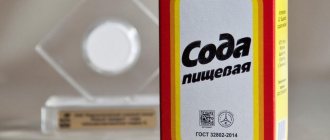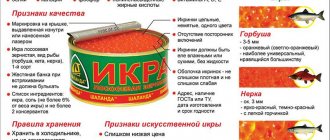Chocolate and chocolate candies are a favorite and healthy treat that is served in many families not only on holidays, but also on everyday life. In addition, chocolates are not only a dessert for family tea, but also a universal gift for all occasions.
Many of us, when buying confectionery products, do not think about their composition and make a choice intuitively, reacting to bright labels, beautiful boxes and catchy inscriptions. Although it is the information contained on the wrapper that you need to pay special attention to. After all, the shelf life of chocolates is an important characteristic that affects not only the taste, but also the physical condition of a person.
How does the composition affect the storage of chocolate?
The shelf life of chocolates is determined depending on the products included in their composition. Of the ingredients present in chocolate confectionery, fats have the shortest safe consumption time; it is their breakdown that leads to the accumulation of concentrates that cause deterioration in human health.
By decreasing shelf life depending on the type of candy, they are arranged as follows:
- Dark chocolate candies – from 1 to 2 years.
- From unsweetened dark chocolate - from 10 to 12 months.
- From milk chocolate – from 6 to 10 months.
- Glazed sweets in wrappers – up to 4 months.
- Assorted - up to 2 months.
- White chocolate candies – no longer than a month.
The shelf life of chocolates is significantly reduced when additives such as peanuts, hazelnuts, hazelnuts, and various fillings are included in their composition. If there are inclusions, the candies should be consumed no later than three months from the date of manufacture.
What is the composition of chocolate candies?
Any candy owes its sweetness primarily to sugar. The sugar content in the product can reach 75%.
Among other ingredients, the most commonly used are: chocolate, cocoa, milk, flour, cream, fruits, dried fruits, molasses, marshmallows, gelatin, starch, nuts, condensed milk, butter, egg whites, fats, alcohol and many others.
Modern production often uses chemical additives - flavorings, thickeners, etc.
Loose sweets
Everything is clear with products in branded packaging from the manufacturer, but how to determine the expiration date of loose chocolates? With this, things are more complicated, because the expiration date of weighted goods is indicated only on the box. There are few options here: either ask the seller, who is obliged to provide you with all the necessary information, or open the candy and evaluate the quality yourself.
How can you tell if candy is spoiled?
It is quite difficult to get poisoned by candy, since most types of products do not contain perishable ingredients.
First, the presentation is lost and the nutritional quality is reduced, and only then can the candy cause harm to health.
identify spoiled candies by the following signs:
- The shape of the candies has been disrupted - “old” candies usually lose moisture and “shrink” in size.
- A white or other coating has appeared.
- The taste of candy changes.
- Mold or even worms appear on the products.
If the above symptoms are found in sweets, it is better to stop consuming them.
They probably won’t cause serious harm to health, but they certainly won’t bring pleasure either.
Consequences of eating expired chocolate
Relatively recently, chocolate and candies made from it were included in the list of products that can be eaten after the expiration date. According to members of the organization for the protection of natural resources, expired chocolate becomes less tasty, but is not harmful to health and can be eaten six months after the expiration date. That is, if you have eaten several “unsuitable” sweets, then nothing threatens your health. However, such experience does not need to be turned into a habit.
Remember:
- Expired products are inferior in quality to fresh ones.
- Food moths like to lay their larvae in improperly stored chocolate.
- In severely expired chocolates, oxidation of fats begins to occur, the consumption of which can lead to dangerous diseases.
Watch the quality of the products you eat!
How to store it correctly?
The optimal storage temperature for sweets is from +15 to +22°C, so there is no point in storing sweets in the refrigerator, and this significantly spoils their taste.
Therefore, store sweets at room temperature, avoiding direct sunlight, sources of high temperatures and strong odors. Air humidity should not exceed 75%.
Subject to storage conditions, the candies will not cause harm and will remain quite suitable much longer than the stated expiration dates.
For example, candy that has a shelf life of 6 months is still edible even 5 years after it was made. At the same time, with such types of sweets as fudge or creamy candies, it is better not to take risks and consume within the expiration date.
What to do with chocolate after its expiration date
If the product is slightly expired, a light matte coating has appeared on it, but it has no visible damage or bitterness, it can be heat treated for further consumption. You can make various confectionery products from this chocolate.
Is it possible to return expired sweets to the retail chain?
If a consumer discovers that the purchased chocolate has expired, he can return it to the retail chain by following a number of steps:
- present to the store a receipt indicating the date of purchase of the goods;
- in the absence of a receipt, it is necessary to find witnesses who will confirm the purchase of the goods in this store and provide packaging elements;
- if you refuse to accept the goods and pay monetary compensation, you should leave the claim in the book of complaints and suggestions;
- file a complaint with the Center for Hygiene and Epidemiology or a consumer protection organization.
Is it possible to eat expired chocolate and what will happen to the consumer?
Spoiled chocolate may contain microbes, fungi and bacteria that are dangerous to the human body and can cause food poisoning. In addition, oxidized fats contribute to the development and growth of tumors. If a person consumes a small amount of expired chocolate, this will not lead to cancer.
First aid for poisoning
First you need to drink a lot of water. Then you need to rinse the stomach and cleanse the intestines of the remnants of spoiled chocolate. After this, take one of the adsorbent drugs (Polysorb, Atoxil or Enterosgel), as well as an enzymatic agent. If your health worsens, you should consult a doctor.
Consequences of poisoning
Food poisoning can cause an intestinal infection, which is accompanied by vomiting, diarrhea, severe pain in the gastrointestinal tract, liver and pancreas. In addition, chills and fever appear with an increase in temperature.
During an allergic reaction, skin rashes appear on the body in the form of small or large red spots. Severe itching, runny nose, watery eyes appear, and asthma attacks may occur. Severe poisoning can cause convulsions and loss of consciousness.
Feeling worse may be a consequence of eating too much chocolate.
How to determine the expiration date of chocolates and what it depends on
The storage time of chocolates is determined by the composition of the filling, i.e. the most perishable components of the product.
By weight
When buying loose candies, you must ask the seller for a product quality certificate and other documentation confirming that the batch number on the packaging corresponds to the number indicated in the submitted document.
From top manufacturers
Shelf life table for sweets from different manufacturers.
| № | Brand | Shelf life (months) |
| 1 | “Mouth front” | 6 |
| 2 | “Ferrero Rocher” | 9 |
| 3 | "Alpen Gold" | 9 |
| 4 | "Mercy" | 10 |
| 5 | "Nestlé" | 9 |
| 6 | "Snickers" | 7 |
| 7 | "Mars" | 7 |
| 8 | “Bounty” | 7 |
| 9 | “Babaevskie” | 5 |
| 10 | "Little Red Riding Hood" | 9 |
| 11 | “My fire” | 9 |
Rules for storing sweets and chocolate
Sugary confectionery products are stored in accordance with the following requirements.
- The room in which the products are located must be dry, clean and well ventilated.
- The optimal storage temperature is from +3 to +18°C.
- Permissible air humidity: 65-75%.
- Products are placed on shelves and racks taking into account their product proximity. It is not allowed to store food next to household chemicals, cosmetics, building materials and poisons.
- Candies should be stored away from sunlight or in opaque packaging.
- Chocolate bars, candies and bars are placed on open, ventilated shelves.
- Dragees, caramels and wrapped candies are stored in sales trays or factory boxes.
- Candies without wrapper are lined with paper and stored in original boxes.
Detailed information about the rules and conditions of storage is available in such regulatory legal acts as the Federal Law of the Russian Federation dated January 02, 2000 No. 29 “On the quality and safety of food products”, TR CU 021/2011 “On the safety of food products, as well as in sanitary and epidemiological and hygiene requirements of SanPin.
External and taste signs of unsuitable sweets
White coating is a sign of improper storage, but has a greater effect on taste and appearance. However, there are other reasons why you definitely shouldn’t eat sweets:
- Chocolate moth. Numerous small holes on the surface or cut of the candy are a sure sign of this scourge. There may also be grains present - these are waste products of moth larvae.
- Mold on candy. You should not cut off the affected layer, you need to throw away the entire batch. Mold actually penetrates deeper.
- A sour or rancid taste of candy is a clear sign of an expired product. Eating such sweets risks poisoning.
And lastly: if you have doubts about the quality of sweets in appearance and taste, it is better to take care of your health and refuse them.
What factors affect the shelf life of candy?
Sweets are included in the category of sugary confectionery products. Due to the high content of sugar and preservatives, they can be stored from 15 days to 3 years. The exact expiration date depends on the following factors:
- quality of raw materials;
- composition of the product;
- the method of its production;
- type and properties of packaging;
- storage and transportation conditions.
Sweets are stored in individual packaging, consumer containers, or in open trays. Packaging prevents contact of products with the environment and slows down the processes of adsorption and desorption. Its damage, opening and disposal significantly reduces the shelf life of confectionery products.
The benefits and harms of sweets
Benefit
Chocolate is undoubtedly a healthy product. It contains a large amount of antioxidants and is involved in the production of dopamine, endorphins and serotonin. Thanks to these qualities, chocolate is a natural antioxidant. Dark chocolate with a high cocoa content is especially useful. Substances found in cocoa beans have antiseptic properties, participate in the hematopoietic function of the body, and contain carbohydrates that provide energy.
Harm
But sweets (including chocolate) should not be consumed uncontrollably. A large amount of sweets and chocolate loads the liver, can cause allergies, and provoke the formation of blood clots. Various lollipops, lollipops, marmalade, and caramel contain large amounts of sugar. Consumption of these products in large quantities leads to an imbalance of the acidic environment not only in the mouth, but throughout the body. Sweets can cause damage to tooth enamel (caries), atherosclerosis, diabetes, obesity, and early aging of the skin. Therefore, nutritionists advise eating no more than 50g of sweets per day for an adult; accordingly, for children this norm is reduced by 2-3 times.
How to return an expired product?
Sellers and manufacturers are obliged to remove from sale expired goods (Article 5 of the Federal Law of the Russian Federation No. 2300-1 of 02/07/92 “On Consumer Rights”). Prohibited:
- repackage sweets;
- change the production date and expiration date;
- mix goods by weight from old and fresh batches.
If expired products are discovered, the buyer has the right to return them to the store. As compensation, the client may demand:
- replace the damaged product with a similar one with a sufficient shelf life;
- replace the overdue product with a product from another manufacturer with subsequent recalculation;
- return the money.
To confirm a trade transaction, it is enough to provide a receipt, the product itself, or request video from surveillance cameras. If the seller refuses to compensate for losses, you can submit a claim to the local Center for Hygiene and Epidemiology.
Is it possible to store chocolate and candies in the refrigerator?
Candies and chocolate can be stored in the refrigerator. If the room temperature is above +20 ºC, the sweets are transferred to the bottom shelf of the refrigerator. This helps prevent sugar and fat bloom of the product, as well as its deformation. Do not forget about the rule of product proximity and store confectionery products next to raw meat, expired products and eggs.
It is not recommended to place sweets and chocolate in the freezer. As a result of freezing, products lose most of their organoleptic properties.
Remember that storing sweets in the refrigerator does not extend the original shelf life.
Storage in vacuum packaging
The generation and reproduction of bacteria is impossible in an airless environment. Vacuum packaging protects candies from oxidation, mold and microbial spoilage. The principle of its operation is very simple: the product is placed in a plastic package, from which the air is pumped out. In this form, sweets can be stored for 1 year.
The main disadvantage of a vacuum is the lack of natural respiration in sweets and chocolate during storage.
Storage at room temperature
Natural sweets retain their organoleptic properties even at room temperature. The softening of sweets and chocolate at +21/+24°C indicates vegetable fats in their composition. Products in sealed packaging are stored in a kitchen cabinet throughout their shelf life.
When choosing a place for sweets, make sure that the shelf (cabinet) is located away from heating appliances. Remember the principles of commodity neighborhood.
How to choose fresh candies?
- Please note the date of manufacture. When purchasing candy by weight, ask the sellers for technical documentation for the product. Don't forget to compare the lot numbers on the document and on the box.
- Refuse to purchase a product if a store sticker is applied over the factory expiration date.
- Conduct a sensory evaluation of the product. The surface of the sweets should be free of chips, dents, cracks and other defects.
- Give preference to goods in packaging and pay attention to its integrity. If the seal is broken, the shelf life of some products is reduced to 3, 7 or 30 days.
- For the same reason, do not buy repackaged candies.
- Remember that fresh goods are stored at the back of the shelves and are rarely on sale.
What are the dangers of consuming a stale product?
Is it possible to eat candy that has an expiration date? Oddly enough, the main natural preservative that prevents spoilage of sweets is sugar, which is the main component of sweets.
Therefore, as long as you follow proper storage rules, candies with an expiring date are still quite safe. Typically, manufacturers indicate expiration dates with a large margin, so the approaching expiration date does not mean that the candies will definitely go bad.
If the appearance of sweets fully corresponds to the idea of quality products, then eating sweets with an expiring or even expired shelf life is quite safe .
You will find recommendations for storing stewed meat on our website.
What does GOST say?
In terms of shelf life of chocolate and candies, GOST cannot help the consumer in any way. Here are detailed general technical requirements regarding classification, quality of raw materials, mass fraction of main ingredients:
- for sweets - GOST 4570-2014;
- for chocolate - GOST 52821-2007.
Clause 8.3 of both regulations indicates that the shelf life of products is established by the manufacturer and indicated in the technical documentation.
Download for viewing and printing:
GOST 4570-2014 “Candy. General technical conditions"
GOST 52821-2007 “Chocolate. General technical conditions"
Expiration dates for popular brands
Let's look at the deadlines that well-known companies set for their products - glazed chocolates are stored for up to 9 months;
Here we need to make a small remark. The production company Milka specializes in the production of milk chocolate, which is usually stored for 8-10 months. Considering that the manufacturer indicates a shelf life of up to 1 year, the composition contains various additives and preservatives that protect the product from premature deterioration. This manufacturing technology is not considered illegal, however, the products cannot be called natural.











